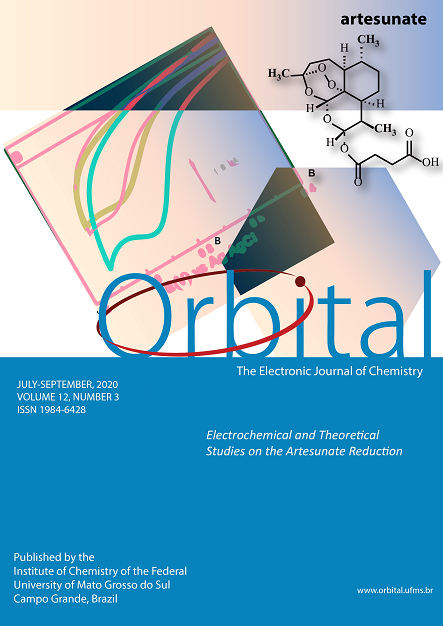- lichen,
- Leishmania spp,
- structural modification,
- Trypanosoma cruzi,
- xanthone
Copyright (c) 2020 Orbital: The Electronic Journal of Chemistry

This work is licensed under a Creative Commons Attribution-NonCommercial-NoDerivatives 4.0 International License.
Abstract
A series of xanthone derivatives containing different side chains, including ω-bromo and ω-aminoalkoxylxanthones (with linear alkoxy chains of 3, 4 and 5 carbon atoms and methyl, propyl, tert-butylamino and piperidinyl moieties), synthesized from the natural xanthone lichexanthone were tested for their antiprotozoal activities against Leishamania braziliensis, L. major and Trypanosoma cruzi (extra and intracellular forms). The ω-aminoalkoxylxanthones showed good antileishmanial activity, with IC50 ranging from 62.8 to 0.1 µM for promastigotes and 119.3 to 2.4 µM for amastigotes. In general, compounds with longer alkyl chains and tert-butylamino moiety showed better activity. The cytotoxicity on VERO cells was also described for some derivatives. Compound 15 (tert-butylaminobutyloxy side chain) was the most active on promastigote forms (IC50 0.1 µM), compound 16 (tert-butylaminopentyloxy side chain) sowed the best activity for amastigotes (IC50 2.4 µM) and derivative 13 (dipropylaminopentyloxy side chain) was the most selective (selectivity index of 9.4). Regarding trypanocidal activity, 16 and other groups of derivatives, (ω-bromoalkoxylxanthones, prenyl and epoxyl side chains) had moderate to good activity on T. cruzi trypomastigotes, with IC50 ranging from 30.6 to 4.1 µM, while only two ω-aminoalkoxylxanthones (10 and 11) were weakly active against T. cruzi amastigotes.

